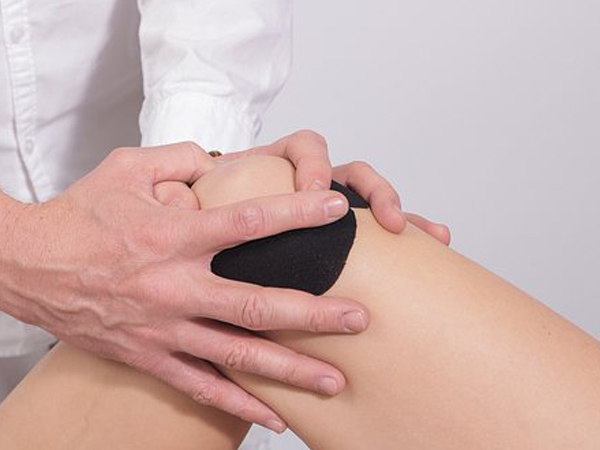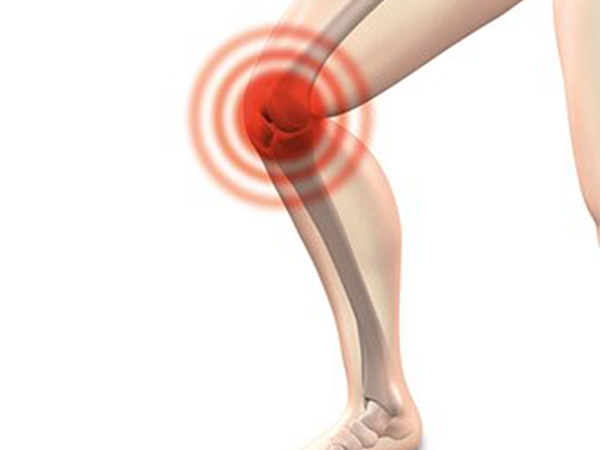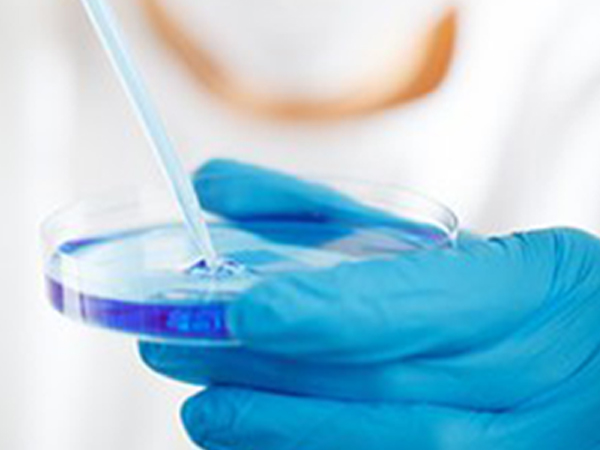Just In
- 15 min ago

- 54 min ago

- 3 hrs ago

- 4 hrs ago

Don't Miss
- Sports
 BAN vs ZIM: Sikandar Raza to lead Zimbabwe in Bangladesh T20Is, former captain's son named in squad
BAN vs ZIM: Sikandar Raza to lead Zimbabwe in Bangladesh T20Is, former captain's son named in squad - Finance
 Rs 8.50/Share Dividend Recommended: Nestle India Reports 27% YoY Jump In Profit
Rs 8.50/Share Dividend Recommended: Nestle India Reports 27% YoY Jump In Profit - Automobiles
 FanCode Brings The 2024 DTM Season To India With Exclusive Broadcast Rights
FanCode Brings The 2024 DTM Season To India With Exclusive Broadcast Rights - Education
 JEE Main Result 2024 Out, Check Category- Wise Toppers' List Here
JEE Main Result 2024 Out, Check Category- Wise Toppers' List Here - Movies
 Kung Fu Panda 4 OTT Release Date & Platform Fixed: When & Where To Watch The Epic Animation Comedy Film
Kung Fu Panda 4 OTT Release Date & Platform Fixed: When & Where To Watch The Epic Animation Comedy Film - Technology
 Qubo InstaView Video Door Phone Launched in India: Check Price, Features
Qubo InstaView Video Door Phone Launched in India: Check Price, Features - News
 Karnataka Weather Alert: Clouds And Sun to Play Together In Bengaluru Weather Forecast
Karnataka Weather Alert: Clouds And Sun to Play Together In Bengaluru Weather Forecast - Travel
 Escape to Kalimpong, Gangtok, and Darjeeling with IRCTC's Tour Package; Check Itinerary
Escape to Kalimpong, Gangtok, and Darjeeling with IRCTC's Tour Package; Check Itinerary
Pseudogout: Causes, Symptoms, Diagnosis And Treatment
Pseudogout is a kind of arthritis that is known for its sudden and painful swelling in one or more joints of the body [1] . This form of pain can be episodic and lasts for days or weeks. The most commonly affected joint is the knee. This ailment is also known as calcium pyrophosphate deposition disease or CPPD [2] .

This condition is known as pseudogout because of its characteristic features that are quite similar to that of gout. Both gout and pseudogout are conditions that are caused due to crystal deposits (although the crystal differs for each condition) [3] . The risk of this condition increases with age. Treatments are available to reduce the inflammation and help relieve the pain. Read on to know more about this condition.
What Is Pseudogout?
This condition is identified as a type of inflammation of the joints (arthritis). The inflammation occurs due to deposits of crystals called calcium pyrophosphate in and around the joints [1] . Although similar in features to the condition called gout, this condition is different when considering the crystals that cause the inflammation (which is monosodium urate in the case of gout) [3] . The crystals causing each of these conditions have distinct appearances. They can be easily determined when the joint fluid is viewed under a microscope. This helps the doctor to precisely identify the cause of the joint inflammation.
In some cases, pseudogout has been found to occasionally coexist with gout (both types of crystals found in the same joint fluid) [4] . The painful swelling in the joints caused due to pseudogout can lead to joint damage if left untreated. In some rare cases, this condition is also seen to affect the shoulders, hips, elbows, knuckles, toes and ankles.
Causes Of Pseudogout
In most of the cases, the cause of the crystal formation remains unknown. Nevertheless, it is said that the deposits increase as people get older. When the deposits of calcium pyrophosphate dihydrate crystals build up in the cartilage of a joint, it leads to pseudogout [5] . These crystals are released into the fluid of the joint causing the pain and swelling.
This condition is also associated with degenerative arthritis [6] . Acute attacks during this condition can be caused by dehydration. In some cases, pseudogout is found to occur due to the hormonal effects on calcium metabolism from hyperparathyroidism [7] .

Risk Factors For Pseudogout
The following factors can increase your risk of pseudogout [8] :
- Genetics: In some families, the predisposition for developing pseudogout is found to be hereditary. Such people can develop pseudogout at quite a younger age.
- Joint trauma: A serious injury or surgery (trauma to the joint) can lead to the development of pseudogout.
- Old age: The risk of pseudogout increases as one ages.
- Mineral imbalances: People who have very high levels of iron or calcium or very low levels of magnesium are at a very high risk of pseudogout.
- Other medical reasons: An underactive thyroid gland or an overactive parathyroid gland can lead to pseudogout.
Symptoms Of Pseudogout
The most common symptoms of this condition are as follows [9] :
- Intense and sudden joint pain
- Swollen joint, which is warm to touch
- Red or purple skin around the affected joint
- Tenderness around the affected joint
- In some cases, pseudogout can cause persistent swelling. Sometimes it mimics rheumatoid arthritis. When the inflammation gets quite severe, it can lead to loss of range of motion and function of the involved joint.
Diagnosis Of Pseudogout
Lab and imaging tests are essential to diagnose and confirm the presence of pseudogout.
- Lab tests: Blood tests can be conducted to check for issues with the thyroid and parathyroid gland. The test also checks for mineral imbalances. A sample of the joint fluid may be withdrawn from the affected joint using a needle to test for the presence of crystals [10] .

- Imaging tests: X-rays of the affected joint are used to determine the joint damage and crystal deposits in the joint's cartilage [11] .

Treatment For Pseudogout
Although there is no cure for pseudogout, a combination of treatments can help relieve the pain and improve the joint's functionality. The following medications might be prescribed by your doctor:
- Nonsteroidal anti-inflammatory drugs: These usually include naproxen and indomethacin [12] . However, it is important to note that these drugs can cause stomach bleeding and decreased kidney function in older adults.

- Colchicine: This is a drug for gout. However, low doses of this pill work for relieving symptoms of pseudogout as well [13] .
- Corticosteroids: Pills such as prednisone can reduce inflammation and end the painful attack [14] . However, long-term use of corticosteroids can weaken the bones apart from causing cataracts, weight gain and diabetes.
Long-term prevention of recurrent pseudogout can be best achieved through small doses of colchicine and proper hydration
Joint drainage is another technique used for some patients suffering from pseudogout [15] . This procedure is used to relieve the pressure and pain from the affected joint. A needle is inserted to remove some of the joint fluid. This helps in removing some of the crystals from the joint. The procedure ends with the injection of numbing medication and a corticosteroid to reduce the inflammation.
Living With Pseudogout
As there is no cure for this condition, the best management technique is to find ways to reduce your symptoms. Talk to your doctor to find out treatment options that would suit you best. At home, you can try using cold packs to reduce the inflammation. Also, try not to use the affected joint for a couple of days.
- [1] Caswell, A., Guilland-Cumming, D. F., Hearn, P. R., McGuire, M. K., & Russell, R. G. (1983). Pathogenesis of chondrocalcinosis and pseudogout. Metabolism of inorganic pyrophosphate and production of calcium pyrophosphate dihydrate crystals.Annals of the rheumatic diseases,42 Suppl 1(Suppl 1), 27–37.
- [2] Rosales-Alexander, J. L., Balsalobre Aznar, J., & Magro-Checa, C. (2014). Calcium pyrophosphate crystal deposition disease: diagnosis and treatment.Open access rheumatology : research and reviews,6, 39–47.
- [3] Joseph, J., & McGrath, H. (1995). Gout or'pseudogout': how to differentiate crystal-induced arthropathies.Geriatrics (Basel, Switzerland),50(4), 33-39.
- [4] Iqbal, S. M., Aslam, H. M., Faizee, F., Qadir, S., & Waheed, S. (2018). Pseudogout: An Autoimmune Paraneoplastic Manifestation of Myelodysplastic Syndrome.Cureus,10(9), e3372.
- [5] Borowski, A., Heikaus, S., & Kurt, M. (2015). Calcium Pyrophosphate Dihydrate Crystal Deposition Disease of the Sternoclavicular Joint.The Thoracic and cardiovascular surgeon reports,4(1), 46–48.
- [6] Mitchell, N. S., & Cruess, R. L. (1977). Classification of degenerative arthritis.Canadian Medical Association journal,117(7), 763–765.
- [7] Lumachi, F., Motta, R., Cecchin, D., Ave, S., Camozzi, V., MM Basso, S., & Luisetto, G. (2011). Calcium metabolism & hypercalcemia in adults.Current medicinal chemistry,18(23), 3529-3536.
- [8] Macmullan, P., & McCarthy, G. (2012). Treatment and management of pseudogout: insights for the clinician.Therapeutic advances in musculoskeletal disease,4(2), 121–131.
- [9] Beutler, A., & Schumacher Jr, H. R. (1994). Gout and ‘pseudogout’ When are arthritic symptoms caused by crystal deposition?.Postgraduate medicine,95(2), 103-120.
- [10] Tanikawa, H., Ogawa, R., Okuma, K., Harato, K., Niki, Y., Kobayashi, S., & Nagura, T. (2018). Detection of calcium pyrophosphate dihydrate crystals in knee meniscus by dual-energy computed tomography.Journal of orthopaedic surgery and research,13(1), 73.
- [11] Miksanek, J., & Rosenthal, A. K. (2015). Imaging of calcium pyrophosphate deposition disease.Current rheumatology reports,17(3), 20.
- [12] Rhind, V., Downie, W. W., Bird, H. A., Wright, V., & Engler, C. (1982). Naproxen and indomethacin in periarthritis of the shoulder.Rheumatology,21(1), 51-53.
- [13] Alvarellos, A., & Spilberg, I. (1986). Colchicine prophylaxis in pseudogout.The Journal of rheumatology,13(4), 804-805.
- [14] Meed, S. D., & Spilberg, I. (1981). Successful use of colchicine in acute polyarticular pseudogout.The Journal of rheumatology,8(4), 689-691.
- [15] George, M. P., Ernste, F. C., Tande, A., Osmon, D., Mabry, T., & Berbari, E. F. (2019). Clinical Presentation, Management, and Prognosis of Pseudogout in Joint Arthroplasty: A Retrospective Cohort Study.Journal of bone and joint infection,4(1), 20–26.
-
 nutrition6 Foods To Avoid For Gout
nutrition6 Foods To Avoid For Gout -
 nutrition8 Best Foods For Gout Diet
nutrition8 Best Foods For Gout Diet -
 wellnessAstonishing Benefits Of Lily Of The Valley, Interactions & Side Effects
wellnessAstonishing Benefits Of Lily Of The Valley, Interactions & Side Effects -
 wellness10 Essential Oils For Relieving Gout Pain
wellness10 Essential Oils For Relieving Gout Pain -
 disorders cureWhat Is Gout And How It Can Be Treated?
disorders cureWhat Is Gout And How It Can Be Treated? -
 nutrition10 Surprising Good Facts About White Chocolates
nutrition10 Surprising Good Facts About White Chocolates -
 disorders cureAmazing Foods To Reduce Uric Acid In Your Body & Prevent Kidney Stone, Gout
disorders cureAmazing Foods To Reduce Uric Acid In Your Body & Prevent Kidney Stone, Gout -
 wellnessTry This 4-Ingredient Remedy To Eliminate Joint Pain & Gout
wellnessTry This 4-Ingredient Remedy To Eliminate Joint Pain & Gout -
 nutritionTop Alkaline Foods That Can Fight Cancer, Gout, Heart Disease & Diabetes
nutritionTop Alkaline Foods That Can Fight Cancer, Gout, Heart Disease & Diabetes -
 wellnessAluminium Foil For Pain Relief! Try This!!
wellnessAluminium Foil For Pain Relief! Try This!! -
 wellness7 Remedies Using Baking Soda
wellness7 Remedies Using Baking Soda -
 disorders cureRemedies To Reduce Uric Acid
disorders cureRemedies To Reduce Uric Acid


 Click it and Unblock the Notifications
Click it and Unblock the Notifications



